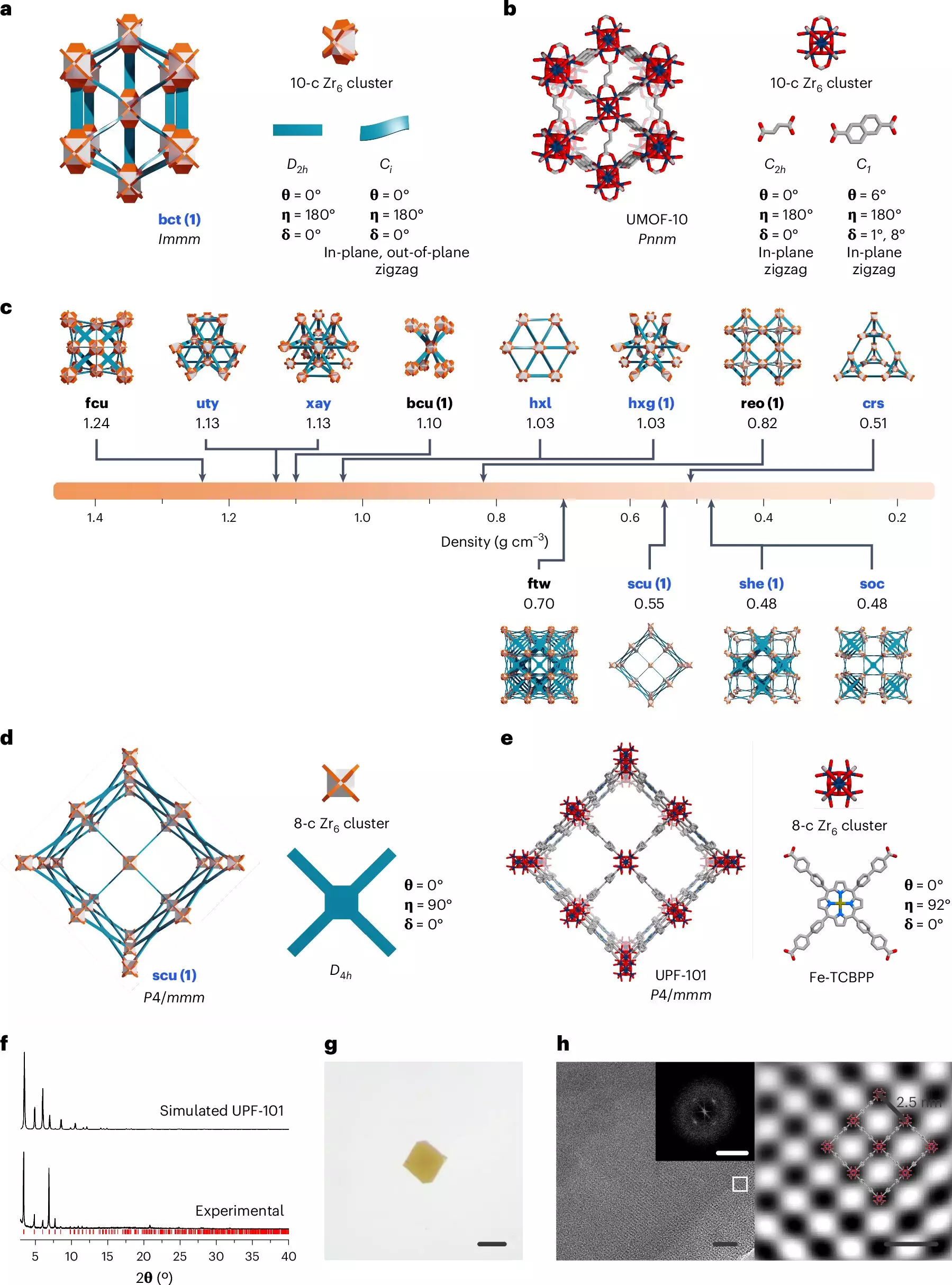The innovative “Up-Down Approach,” introduced by Professor Wonyoung Choe’s research team at Ulsan National Institute of Science and Technology (UNIST) in South Korea, is poised to revolutionize the creation of metal-organic frameworks (MOFs). MOFs, composed of metal clusters and organic molecules, have garnered attention for their diverse applications such as carbon dioxide capture, storage, and catalysis. What sets MOFs apart is their customizable structure, allowing for the development of materials with tailored properties.
Traditionally, MOFs have been designed using either a bottom-up or top-down approach. The bottom-up method involves selecting metal clusters and organic ligands to explore potential structures, while the top-down approach starts with a desired structure and works backward to identify suitable components. The Up-Down Approach merges these two strategies, enabling a wider exploration of structures based on metal clusters before selecting organic ligands. This departure from conventional methods liberates researchers from preconceived notions and structural constraints, opening doors to novel MOF designs that were previously unreachable.
Through the implementation of the Up-Down Approach, Professor Choe’s team discovered 26 new zirconium-based MOFs known for their exceptional chemical stability. Two of these structures were successfully synthesized, showcasing the efficacy of this groundbreaking strategy. Moreover, the team adopted a “Ribbon Representation” technique to visually depict the geometric characteristics of organic ligands, enhancing the precision and efficiency of the design process. Jiyeon Kim, the study’s lead author, emphasized the power of the Up-Down Approach in rapidly developing materials with diverse chemical properties. Co-first author Dongsik Nam echoed this sentiment, emphasizing the potential for innovative materials with applications spanning catalysis, gas storage, and environmental remediation.
Expanding the Horizons of MOF Research
Professor Choe heralded the study as a significant leap forward in broadening the chemical landscape of MOFs, thereby expanding their potential applications. The Up-Down Approach not only accelerates material development research but also fosters the discovery of avant-garde materials with far-reaching implications. By transcending the confines of traditional design methodologies, this novel strategy represents a paradigm shift in MOF research, offering researchers a new lens through which to explore the vast possibilities of these versatile materials.


Leave a Reply